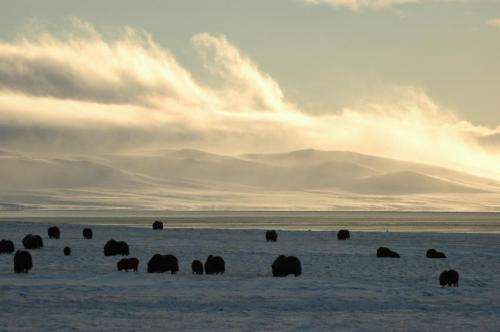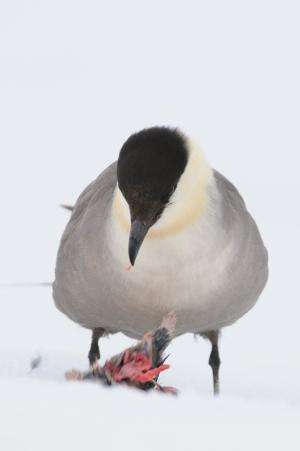Researchers reveal the dynamics behind Arctic ecosystems

Species such as the musk ox, Arctic fox and lemming live in the harsh, cold and deserted tundra environment. However, they have often been in the spotlight when researchers have studied the impact of a warmer climate on the countryside in the north. Until now, the focus has been concentrated on individual species, but an international team of biologists has now published an important study of entire food-web dynamics in the well-reputed journal Nature Climate Change.
Field studies covering three continents show that temperature has an unexpectedly important effect on food-web structure, while the relationship between predator and prey is crucial for the food-web dynamics and thereby the entire ecosystem.
Temperature is decisive
'We have gathered data on all animals and plants characterising the arctic tundra in seven different areas. This has allowed us to generate a picture of how food chains vary over a very large geographical (and, with it, climatic) gradient. Therefore, and for the first time, we can offer an explanation of the factors governing the tundra as an ecosystem,' says Niels Martin Schmidt from Aarhus University, Denmark, one of the researchers behind the study.
The researchers have evidenced that temperature is of decisive importance for which elements form part of the food chain, thus permitting them to predict how climate changes may impact whole food chains – and not just the conditions for the individual species.
The largest avoids being eaten
Temperature regulates which organisms interact with each other in the far north arctic nature. However, the present study also shows that predation, i.e. the interactions between predators and prey, is the factor regulating the energy flows in ecosystems and, with that, the function of the ecosystem.

'Our results show that predators are the most important items of the tundra food chains, except in the High Arctic. The intensity varies with the body size of the herbivores (plant eaters) of the chains. For example, the musk ox is far more likely to avoid being eaten by predatory animals than the lemming,' Niels Martin Schmidt explains.
Researchers have previously revealed similar patterns for the food chains of the African savannas. The researchers behind the present recently published study therefore believe that we may possibly be one step closer to proposing a general principle for how terrestrial ecosystems are structured.
More information: Arctic ecosystem structure and functioning shaped by climate and herbivore body size in Nature Climate Change (published online 23 March 2014). www.nature.com/nclimate/journa … ll/nclimate2168.html
Journal information: Nature Climate Change
Provided by Aarhus University


















